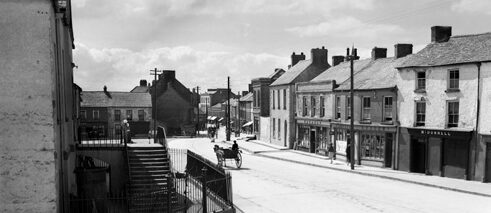Traces along the Wild Atlantic Way
Irish Palatines

In the early 18th century, thousands of German Protestants fled as refugees from the Lower Palatinate and hundreds settled in Ireland.
In May 1709, many desperate inhabitants of Palatinate, Hesse and Baden were forced off their land by the vicious wars between France and a confederacy that included England; bad harvests and a terrible winter didn’t help either. They were shipped initially to London. Over 800 families, comprising more than 3000 people, were sent on to Ireland between September 1709 and January 1710. Most left again within a few years, for England or America, but 150 families settled in Rathkeale, County Limerick and thrived in the production of hemp, flax and cattle. A second successful settlement of Palatine families took hold near Gorey in Co. Wexford around the same period.
The distinctive Palatine way of life endured in these areas until well into the 19th century. Many adopted Methodism: one Irish Palatine, Barbara Heck is known as “the mother of American Methodism”. Evidence of their eventual absorption into Irish life is the geographical spread of their distinctive names such as Switzer, Wyse, Ruttle, Teskey and Shouldice. One of the best-known Irish traditional love songs is called The Palatine’s Daughter.
Visitor Information:
Irish Palatine Association
Irish Palatine Heritage Centre
The Old Railway Buildings
Rathkeale
Co. Limerick
IRELAND
+353 (0)69 63511
info@irishpalatines.org
Institut für pfälzische Geschichte und Volkskunde (Institute for Palatinate History and Folklife Studies)
Benzinoring 6
67657 Kaiserslautern
GERMANY
+49 (0)631 364 7303
info@institut.bv-pfalz.de
„German Traces in Ireland“ is a project of the Goethe-Institut Irland